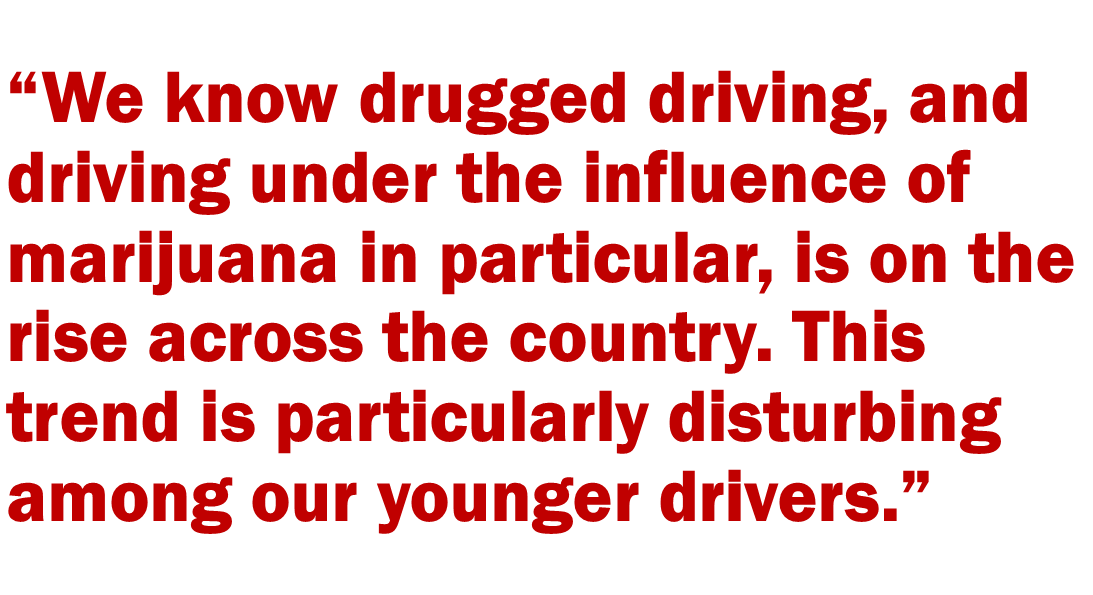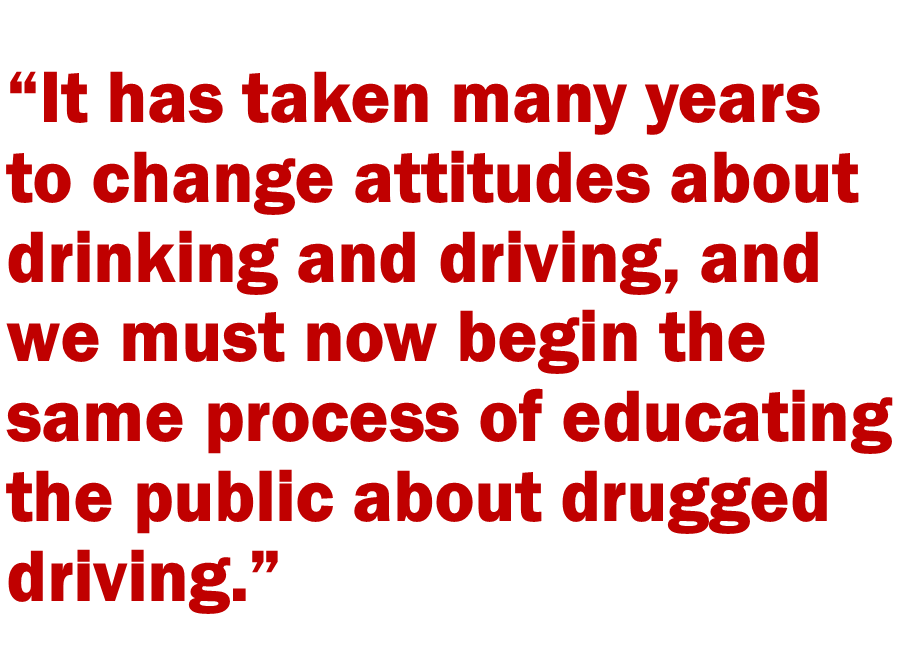PERSPECTIVE: Legalizing Marijuana Would Jeopardize Safety on Connecticut Roads
/By Amy Parmenter A poll by AAA of almost a thousand drivers across Connecticut found earlier this year that 50 percent do not support the legalization of recreational marijuana. Of younger respondents (ages 18-24) opposed to legalization, 40 percent expressed ‘concern that marijuana is a national public health issue’.
As the advocacy organization for all motorists, AAA opposes the legalization of marijuana for recreational purposes because of a broad range of traffic safety concerns including, but not limited to, the following three factors detailed in the testimony below:
- A significant increase in drugged driving and marijuana-involved fatal crashes
- An inability to simply and accurately measure impairment
- The complexities and challenges legalization would present to law enforcement, our courts and state agencies
 Increase in Drugged Driving and Marijuana-involved Fatal Crashes
Increase in Drugged Driving and Marijuana-involved Fatal Crashes
Recent research by the AAA Foundation for Traffic Safety found that in the year following the legalization of recreational marijuana in Washington State, the number of drivers in fatal crashes who had recently used Marijuana more than doubled.
We know drugged driving, and driving under the influence of marijuana in particular, is on the rise across the country.
According to a 2013-2014 survey by the National Highway Traffic Safety Administration (NHTSA), drug use among nighttime weekend drivers increased 25 percent since the previous study in 2007. The drug showing the greatest spike was marijuana, with an increase of almost 50 percent.
This trend is particularly disturbing among our younger drivers.
A AAA poll conducted in 2016 found that, of those between the ages of 18-29, almost 25 percent admitted that within the past year they ‘regularly’ or ‘fairly often’ drove after using marijuana – whereas only about 15 percent admitted to driving drunk during the same time frame.
Inability to Accurately Measure Impairment
While there is the understandable temptation to measure impairment by alcohol and marijuana in the same way, it cannot be done.
Unlike with alcohol, the amount of active THC (the psycho-active ingredient in marijuana) in the blood has NO scientific correlation with a driver’s level of impairment or propensity to crash. Active-THC, is fat soluble and is metabolized differently than alcohol, which is water soluble. To accurately predict driver impairment or crash risk as a function of how much active-THC a person has in their body would require us to measure how much of the drug is in the fatty tissue of the brain—not the blood.
While roadside drug tests may soon be available, even the most accurate of these tests will be of no use in determining impairment. They will only show the presence of THC in the blood.
Challenges to Law Enforcement and Courts
Because of the inability to accurately determine impairment at the roadside as described above, law enforcement and the court system face unique challenges and complexities when it comes to marijuana that do not exist for alcohol.
 One of the most common ways lawmakers in marijuana states have attempted to address traffic safety concerns is to establish an impairment threshold for marijuana, a ‘per se’ standard for it, (similar to the 0.08 BAC standards in every state for alcohol).
One of the most common ways lawmakers in marijuana states have attempted to address traffic safety concerns is to establish an impairment threshold for marijuana, a ‘per se’ standard for it, (similar to the 0.08 BAC standards in every state for alcohol).
After analyzing data from nine states, the AAA Foundation published a report last year in which researchers concluded that ‘to establish a per se standard for marijuana is meaningless as a tool to address impaired driving’.
Additional considerations:
- This is not the marijuana of previous generations. The concentration of the impairing chemicals in most marijuana range from 25-30% in plant form – 10 TIMES as much as in the 70's and 80's.
- There have been two systematic reviews of multiple studies on the impact of marijuana on driving. Both determined that, conservatively, marijuana at least doubles the risk of causing a traffic crash.
It has taken many years to change attitudes about drinking and driving, and we must now begin the same process of educating the public about drugged driving.
Legalizing marijuana before we are prepared to manage the potential highway safety consequences, before we have prepared our law enforcement officers with all the training and resources they need to address this issue, endangers the Public Health of our state.
While some people are focused on revenue to be generated, AAA is focused on traffic safety and the unintended consequences of legalization, for which we believe Connecticut and other states are ill-prepared.
Legalization of marijuana will, without question, increase the number of people who use it and get behind the wheel and drive. That puts all of us at greater risk on the road.
______________________________
Amy Parmenter is Manager of Public and Government Affairs for the AAA Allied Group. This was provided as testimony to the state legislature’s General Law Committee during the 2018 session, when the legislature was considering a proposal to legalize marijuana in Connecticut. It is on behalf of both AAA clubs in Connecticut, the AAA Allied Group and AAA Northeast, which together represent more than a million members.





























